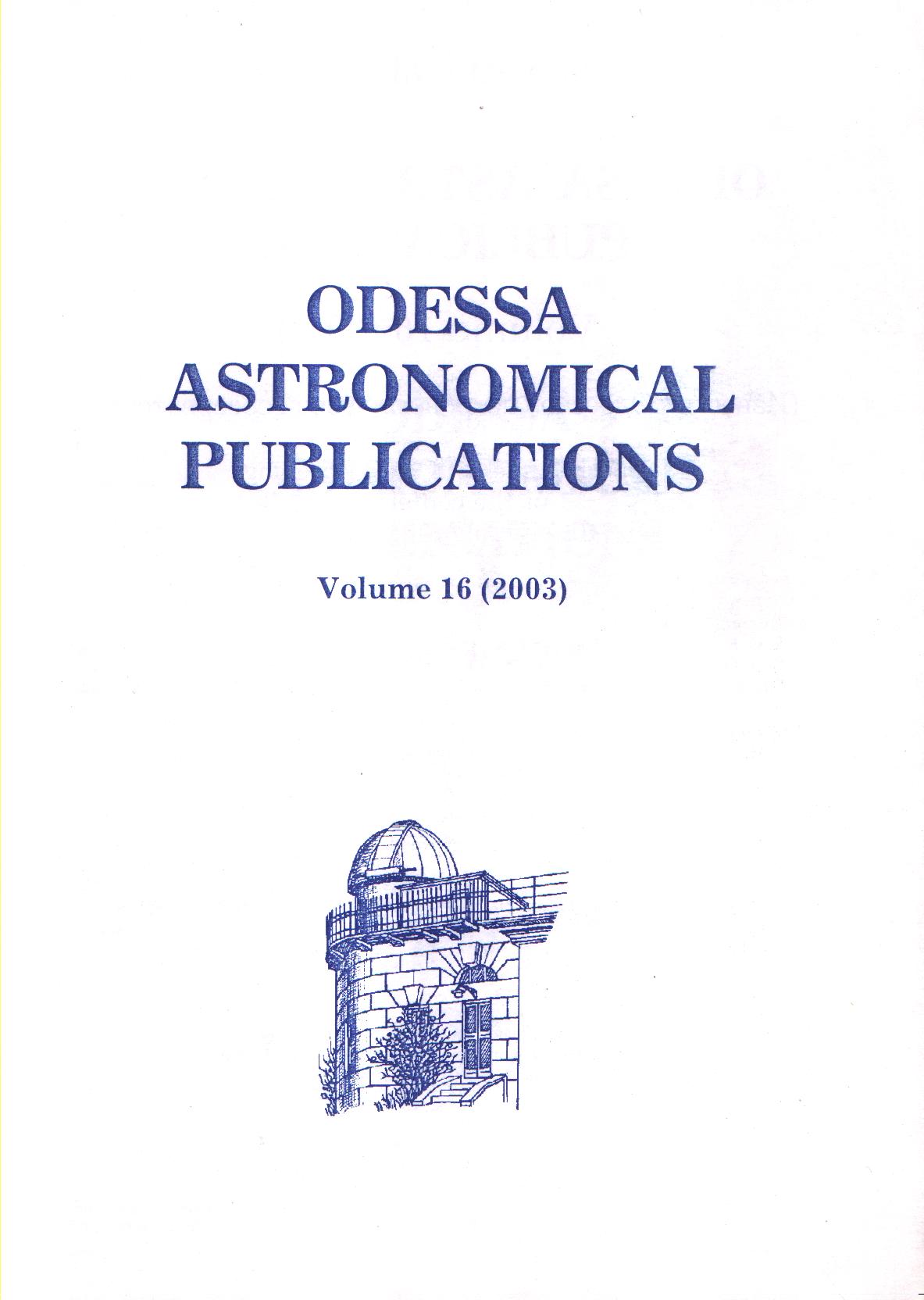XMM-Newton and Chandra High Resolution X-Ray Spectroscopy of Magnetic Cataclysmic Variables and Low Mass X-Ray Binaries
DOI:
https://doi.org/10.18524/1810-4215.2003.16.96938Ключові слова:
Stars, binary, cataclysmic, LMXBs, stars, individual, AM Her, PQ Gem, Her X-1.Анотація
Here we discuss the helium-like triplet plasma diagnostic method that can be applied to high resolution X-ray spectra of magnetic CVs and low mass X-ray binaries obtained with the high-resolution spectrographs on the ESA satellite XMM-Newton and the NASA satellite Chandra . The two observations of Her X-1 obtained with the Chandra Low Energy Transmission Grating (LETGS), one lasting 30 ks during the anomalous low state (ALS) and the other 20 ks during main on just before eclipse ingress. During the ALS and the pre-eclipse dips only the intercombination line of the He-like O VII and N VI triplets are detected. Thus the resonance line must be scattered out of the line of sight indicating an optical depth of ῖ- > 1. The missing forbidden lines give for collisional plasma a lower limit for density of ne > 10 11….12 cm -3 and for the temperature of T ~ 10 6,0….6,5 K. These constraints require the corona to be at a distance r ~ 10 10-11 cm from the central source. XMM-Newton RGS spectra during similar states show exactly the same He-like triplet structure as the Chandra observations. For the magnetic CVs AM Her and PQ Gem the most remarcable result is that the lines emitted in the post-shock flow from the cooling hot plasma are strongly broadned. The most likely reason for this is the Doppler-shifting of the lines due to the changing angle between the observer and the accretion column as the white dwarf rotates. The maximum detectable shift in the case of AM her is of the order of 750 km/s.
Посилання
Beuermann, K., Bréuninger, H., Triimper: 1979 Appl. Opt, 18, 368.
Basko M. M. 84: Sunyaev R. A.: 1973, Ap&SS, 23, 117.
Brinkman A.C., Gunsing C.J.T., Kaastra. J.S., et al.: 2000 ApJ, 530, 111.
Burwitz V., Zavlin V.E., Neuhauser R., Predehl P., Triimper J., et al.: 2001a, A&A, 379, L35.
Burwitz V., Dennerl K., Haberl F., Neuhauser R., Predehl P., et al.: 2001b, ASP Conf Ser., 234, 287.
Burwitz V., Haberl F., Predehl P., Reinsch K., Barwig H.: 2001c, ASP Conf Ser., 251, 344.
Coburn W., Heindl W. A., Wilms J., et al.: 2000, ApJ, 543, 351.
den Herder, J. W. et al.: 2001, A&A, 365, L7.
Jansen, F., Lumb., D., Altieri, B. et al.: 2001, A&A, 365, L1.
Jimenez-Garate, M. A., Hailey, C. J., Herder, et al.: 2002, ApJ, 578, 391.
Levine A. M., & Corbet R.: 1999, IAU Circ, 7139.
Mauche, C. W.: 2000, BAAS 197, 32, 1561.
Mauche, C. W.: 2002, ASP Conf. Ser., 261, 113.
Mukai, K., Kinkhabwala, A., Peterson, J. R., Kahn, S. M., Paerels, F.: 2003, ApJ, 586,77.
Parmar A. N., Oosterbroek T., dal Fiurne D., et al.: 1999, A&A, 350, L5
Parmar A. N., Pietsch W., McKechnie S., et al.: 1985, Nature, 313, 119.
Porquet, D. and Dubau J : 2000, A&AS, 143, 495
Porquet, D., Mewe, R., Dubau, J.,Raassen, A. J. J., Kaastra, J. S. : 2001, A&A, 376, 1113.
Schandl S. & Meyer F.: 1994, A&A, 289, 149.
Vrtilek S. D., Mihara T., Primini F. A., et al.: 1994, ApJ, 436, L9.
WeisskOpf, M. C., Brinkman, B., Canizares, C., Murray, S., Van Speybroeck, L. P.: 2002, PASP, 114, 1.
##submission.downloads##
Опубліковано
Номер
Розділ
Ліцензія
Авторське право (c) 2017 Odessa Astronomical Publications

Ця робота ліцензується відповідно до Creative Commons Attribution-NonCommercial 4.0 International License.
Відповідно Закону України про авторське право і суміжні права N 3792-XII від 23 грудня 1993 року
